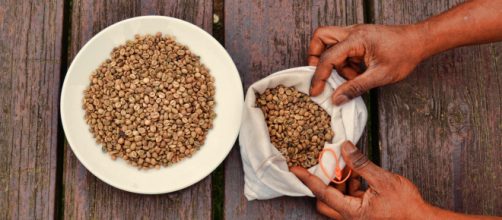As the early morning intake of caffeine pumps through the veins, doing a better job of preparing the partaker for the working day than any alarm clock probably not a great deal of thought goes into caring about the origin of the Coffee. However, feuds have been building for years between connoisseurs and industry insiders regarding the origins of coffee beans.
In a world of consumer education, it’s time to wake up and smell the coffee
Our sense of smell, more than any of our other senses makes our final judgement on coffee.
A recent BCA (British Coffee Association) survey unearthed the fact that last year, 95 million cups of coffee a day were consumed in Britain.
This is compared to 75 million in 2008. That’s a 27% increase. With there being circa 70 coffee producing countries around the world, with Brazil being the largest producing around 28 per cent of the total world output. There is little by way of hard facts to say that consumers make informed choices about where their morning coffee came from or how it got to their cup.
Let’s go through the fundamental issues: this means differentiating between “blended coffee”, “single origin blend” and “single origin plantation". The onus needs to also be on the purveyors to promote and provide a choice of the three.
Blend v single origin – is it possible to define the boundaries between the two?
Single origin coffee has been modified over the years.
The debate has led to the term “single origin blend”. This came about due to the traceability of the beans used back to a single farm/plantation. This became confusing and open to manipulation. For example, a popular region for harvesting coffee beans is Sidamo, Ethiopia – it has a total area of 10,000 km2. Therefore, critics argued that to label beans that could have been grown many miles apart, rendering the term “single origin” misleading.
The term “single origin blend” grew to compensate for this. From a consumer knowledge perspective, if you wish to combine the Sidamo flavours then a Sidamo single origin blend is your go-to. However, if you wish to be able to trace the specific location, then the single plantation coffee of Ethiopia Bench Maji Wild Forest provides that choice.
Yet, not many drinks menus provide that choice/details, as you ponder your choice of morning pick-me-up.
Coffee variety – the differences
The common difference and commercial advantage in the preference for some blending of coffee beans brings about the ability to produce beans all year round. Given the kudos attached to the term “single origin”, it has become increasingly nuanced to refer to the traceability of the coffee bean to a specific farm. Wikipedia, unsurprisingly says differently, still choosing to use the country of origin as the deciding factor. The term still lacks a real definition – it is something that will be debated over a cup of Ethiopian Sidamo or Cuban Serrano coffee the world over.
Single origin coffee discerning the taste
If you’re drinking single original plantation coffee you should be immersed in a unique experience. Any coffee aficionado will tell you that it’s about savouring the soil and leaf flavour, enjoying the heart and soul of the place from which it originated. Yet, even this high level differential in coffee type is often missed by purveyors – potentially denying consumers an informed choice. As ethical consumerism continues to rise, coffee purveyors need to address this gripe. It’s a chance for coffee shops to right a Brexit referendum wrong, and give consumers information on what the options are – giving them informed choice.




